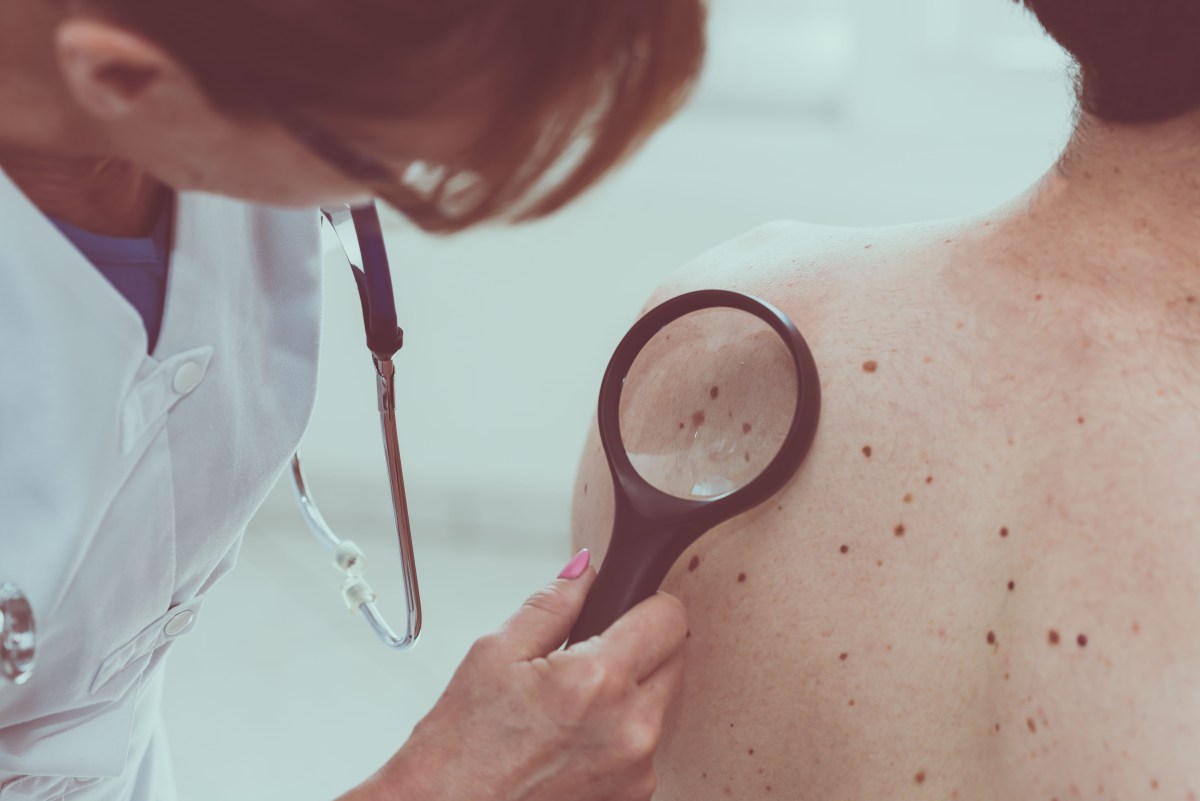Melanoma is the deadliest type of skin cancer. Melanoma occurs when melanocytes, the cells that produce pigment in the skin, become damaged, mutate, and start growing unchecked.
While sunlight or ultraviolet (UV) exposure are typically considered risk factors for the development of melanoma, the fact that melanoma can occur anywhere on the body — even on patches of skin that never see the light of day — indicates UV radiation exposure is not the only reason melanoma occurs.
The American Cancer Society says gene changes related to melanoma are typically acquired during a person’s lifetime, and in some instances seem to happen randomly within a cell. Melanomas that do not result from UV exposure show changes in the C-KIT genes. There’s also the chance that those who develop melanoma inherited gene changes from a parent. These melanomas often result from changes in tumor suppressor genes, rather than genes that help cells grow, divide and stay alive, known as oncogenes. Tumor suppressor genes are supposed to control cell growth. When cells don’t work correctly due to inherited changes or other damage, they grow out of control, potentially leading to melanoma.
The Mayo Clinic says there may be additional environmental factors that damage the DNA in skin cells and cause melanoma, but the cause of cell damage isn’t always clear. However, the following risk factors should be on the minds of all people, and serve as the motivation behind routine skin checks and healthcare visits.
-
Having fair skin and a history of sunburn
-
Excessive UV light exposure
-
Living closer to the equator or at a higher elevation
-
Having more than 50 ordinary moles on the body
-
A family history of melanoma
-
The presence of a weakened immune system from disease or medication
-
Individuals concerned about melanoma can get to know their skin and learn about their family history so they’re more aware of any abnormalities and risk factors
Mucosal melanoma is a rare form of melanoma, accounting for roughly 1 percent of all cases. Everyday Health says mucosal melanoma can develop in the sinuses, nasal passages, vagina, anus, oral cavity, and other internal areas that likely are not exposed to the sun or other UV radiation. Researchers have not been able to identify any risk factors for mucosal melanoma, as neither UV exposure nor family history seem to play a role in its development.
-Metro Creative Connection
Sign up for Long Island Press’ email newsletters here. Sign up for home delivery of Long Island Press here. Sign up for discounts by becoming a Long Island Press community partner here.

































